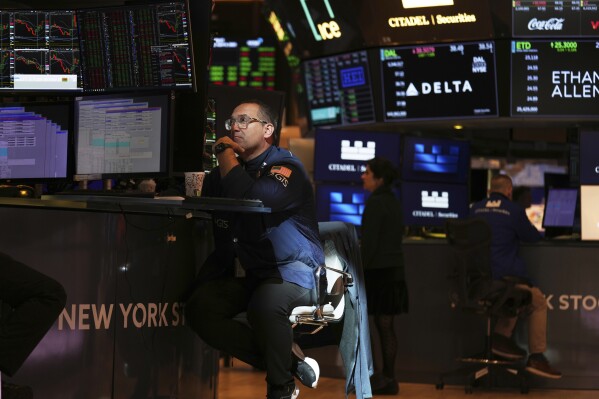How deglobalisation impacts financial assets
We’ve had the everything bubble in financial assets and now it seems that we’re in the everything bust with supposedly ‘safe’ treasuries the next shoe to drop.

Steven Barrow, Head of Standard Bank G10 Strategy, said decades of largely uninterrupted strength in asset prices has been a consequence of globalisation. But that has been a reversal of globalisation going on for some years now and, last Wednesday, the Trump Administration put the accelerator down on deglobalization. It is important to bear in mind that this new tariff mayhem is the continuation of a trend that has been in place for many years and that this trend will likely continue after Trump has gone. “We think this is important because, while this particular market bust might not have plumbed the depths that we saw during the global financial crisis of 2008 or the pandemic of 2020, it is more insidious and, for this reason, probably longer-lasting”, said Steven Barrow.
To see this, we need to recognise why the strong rise in asset prices in the past has been fuelled by globalisation. For this had delivered not just low inflation, but too-low inflation for many central banks, forcing them to cut rates to zero and then conduct quantitative easing when rates could go no lower. Central banks claimed the credit for low inflation and pointed to persistently low inflation expectations but it was not really of their doing; it was globalisation.
At the same time, this process generated rising wealth in the countries that were entering global supply chains with their cheaper products, notably China. This wealth was invested in countries that used the cash to live far beyond their means, as reflected in surging debt and surging trade deficits (mainly the US). But almost inevitably there was a backlash against those seemingly winning from globalisation by those that felt they were losing. This might have been led by the US during Trump’s first term and turbo-charged during his second, but other developed countries have been complicit as well and the Democrats in the US did not unwind the deglobalisation push that happened during Trump’s first term when Biden took over.
In short, as much as many countries around the world might decry the deglobalisation conducted by Trump, many are, or have been, engaged in similar measures – think Brexit in the UK. It seems very unlikely that the world will go back to the globalised era of the 1990s and much of the 2000’s with or without Trump, and that’s why the danger to asset prices is a more insidious one than the global financial crisis (as finance came back again) or Covid (people got to go out again).
Instead, what we’re left with is the prospect of this debt-fueled boom costing a good deal more because deglobalisation means higher inflation and that, in turn, means higher bond yields. Of course, this process has been in place for some time as bond yields have long since passed the low point of the decades-long decline that we’ve experienced and enjoyed. Financial markets might have kidded themselves that inflation was coming down again in recent years and that central banks would be able to go back to normal (or neutral) but the insidious rise of inflation that results from deglobalisation is still ongoing and will, of course, start to look a whole lot worse, at least in the US, as tariff-fuelled inflation rears its ugly head in coming months.
So where are we in this everything bust? Will riskier assets surge and never look back as soon as the Trump Administration announces its first few trade deals? “We doubt it. We think that, unlike Covid or the financial crisis, the bouncebackability of assets, whether stocks or bonds, is much weaker now for the reasons we explained earlier. It might not quite be the economic nuclear winter that some have suggested, although that could be the case if the everything bust moves on to include dollar capitulation”, said Steven Barrow.








